Invisalign – Atlanta, GA
A Clear Path to a Straighter Smile
Plenty of people want straighter teeth but are unhappy with the idea of getting braces. Thankfully, there’s a much clearer path to a straighter smile – Invisalign! These revolutionary clear aligners allow patients to achieve the beautiful, uniform smiles that they’ve always wanted without any of the discomfort that’s associated with traditional metal braces. To learn a little more about Invisalign in Atlanta and what it’s truly capable of, continue reading below or feel free to contact our office for additional assistance.
Why Choose Buckhead Orthodontics for Invisalign?
- Knowledgeable and Experienced Dental Team
- Private Family-Owned Orthodontic Office
- In-House Financing & Payment Plans Available
How Invisalign Works
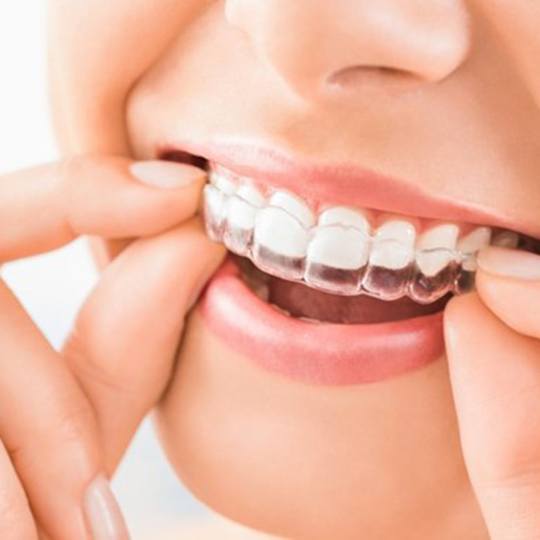
Rather than relying on metal brackets and wires, Invisalign relies on sets of clear plastic aligners to gradually shift your teeth into a straighter and healthier position. You’ll wear each set for about two weeks at a time before advancing to a new one to match your teeth’s progress. You also won’t have to visit us as often as you would with traditional braces, but you will still need to see us every six weeks or so to pick up your new aligners and have us inspect your smile to make sure things are going as planned.
Indications for Invisalign
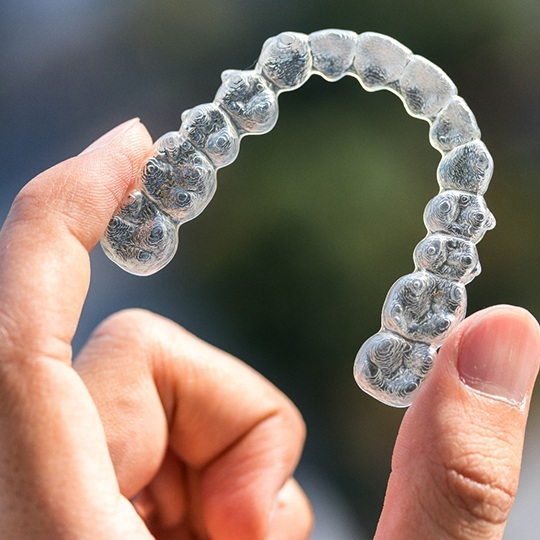
Invisalign can be used to address a wide umbrella of orthodontic issues, including:
Crowded Teeth
If it feels like you have too many teeth in your mouth, you may benefit from wearing Invisalign. The aligners apply precise pressure to different parts of your smile throughout treatment, eventually bringing the teeth into aligned positions. Since crowded teeth greatly increase your risk of tooth decay and gum disease, it’s in your best interest to have this issue corrected promptly.
Gaps Between Teeth
You might also have spaces between your teeth that can make your smile feel unattractive. But just like having crowded teeth, this issue can also increase your risk of oral health issues. This is because leftover bits of food debris can become trapped in these gaps. However, Invisalign can gently push your teeth closer together, closing those gaps and providing added protection to your oral health.
Bite Alignment
If your whole bite isn’t aligned, it can place unnecessary pressure on your temporomandibular joint (TMJ) and cause problems like TMJ disorder as well as bruxism (teeth grinding and clenching). Fortunately, Invisalign is able to address a wide variety of bite alignment issues like overbites, underbites, and crossbites.
Benefits of Invisalign

A straighter and more attractive smile isn’t the only benefit that Invisalign has to offer! If you’re deemed eligible for treatment, there are several other perks you’ll enjoy. Here are a few:
Improved Comfort
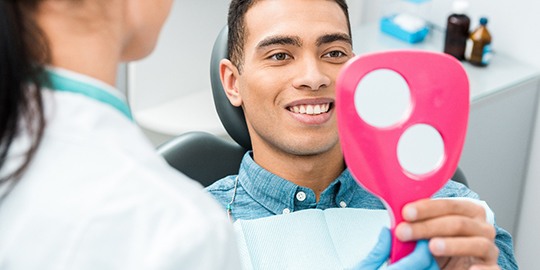
While traditional braces are effective, they aren’t the most comfortable. In fact, it’s quite common for the brackets and wires to poke and prod the soft tissues inside the mouth. Fortunately, that’s not the case with Invisalign. The aligners are crafted from smooth plastic, which shouldn’t irritate your gums. As a result, your journey to a straighter smile will be considerably more enjoyable.
Shorter Average Treatment Timeline

On average, traditional braces can take 2-3 years, although there are some cases where it takes even longer. Invisalign, on the other hand, can typically be completed in just 12 to 18 months, making it a much quicker and more streamlined treatment option. The key to avoiding treatment plan delays is following all of the guidelines we provide, like wearing your aligners for 20+ hours every day.
No Dietary Restrictions

One downside of traditional braces is that they come with dietary restrictions. For example, patients are asked to avoid crunchy foods, like whole apples, raw carrots, and hard pretzels. While there’s a good reason for this (it helps prevent common orthodontic emergencies), it can be quite a nuisance at times. The good news is that Invisalign aligners are removable, so you can eat whatever you’d like!
Discreet Trays
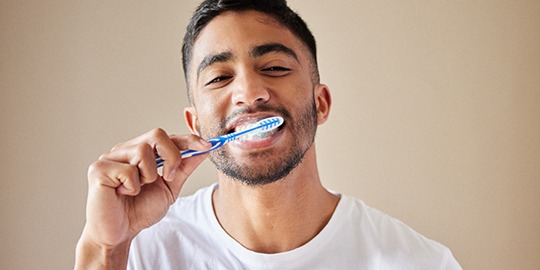
As you may have guessed from the name, Invisalign trays are virtually undetectable while they’re being worn. So, unless someone sees you remove your aligners before you eat or knows what to look for, they won’t even be able to tell that you’re subtly straightening your smile! Just make sure that you take good care of your teeth and your trays so they stay stain-free throughout the teeth-straightening process.
Hassle-Free Dental Care

Another perk of having removable aligners: you don’t need to adopt a cumbersome dental care regimen or buy special oral hygiene products, like interproximal toothbrushes, to keep your smile healthy. Instead, you can continue to brush, floss, and rinse with mouthwash as usual. All we ask is that you take good care of your aligners as well so they don’t stain or develop an unpleasant odor.
Ultimate Convenience

We mentioned above some of the perks of having removable braces, like the freedom to eat all of your favorite foods. It’s also important to note that you can take your aligners off before taking new passport photos, going on a first date, or any other occasion when you want to look and feel your best. Just make sure that you still wear your aligners for a minimum of 20 hours a day, every day.
Living with Invisalign Aligners

The Invisalign experience is quite different than metal braces, but you’re probably wondering how different! In general, you’ll enjoy comfort and convenience while perfecting your smile with these clear aligners. That doesn’t give you a very clear vision of what living with Invisalign will actually look like, though. To help you peek into the future, we’ve put together handy descriptions of daily clear aligner life below.
Wearing Your Trays
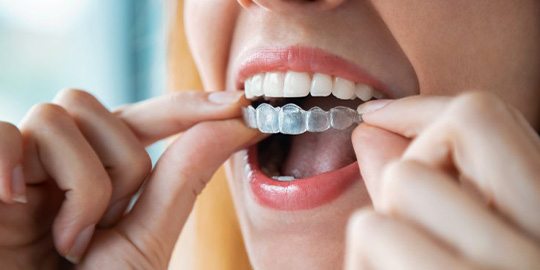
Invisalign trays are removable, but they should be taken out sparingly for the smoothest treatment experience. If you don’t let the trays squeeze your teeth into place for at least 20 hours per day, it’ll take longer for Invisalign to work its magic. This can even cause your pearly whites to shift back out of alignment! To keep things simple, remember that Invisalign should only be removed for eating, drinking, routine maintenance, and switching to a new set of tighter trays.
Cleaning Your Aligners
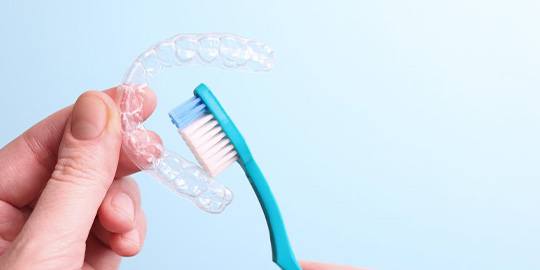
Picture this: you, smiling confidently for photos or maybe a first date, because you know your aligners are virtually invisible. If you want your Invisalign to stay that, you’ll have to keep up with that routine maintenance we mentioned. This means brushing and flossing your teeth after meals, brushing or soaking your aligners on a regular basis, and rinsing your trays before putting them back in your mouth – all while using lukewarm water to avoid warping the plastic.
Eating & Drinking

Many patients’ favorite part of living with Invisalign is that they can eat and drink whatever they want! Before you enjoy your favorite treats and beverages, though, be sure to take your aligners out and safely tuck them away in their case. Munching while your aligners are still in your mouth can damage or stain them, and colored liquids will tint the plastic.
Losing or Damaging a Tray
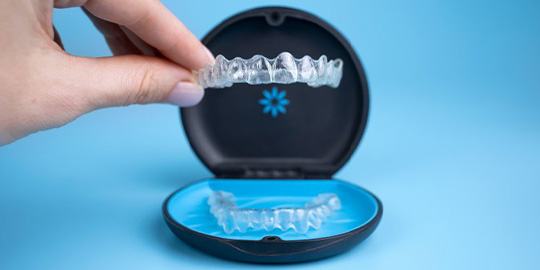
Getting into the habit of putting your Invisalign in their protective case whenever you remove them can help you keep track of them. Still, accidents happen, and you wouldn’t be the first person to have a particularly scatterbrained day. If you lose or damage a tray, don’t panic, but call us as soon as possible. Depending on where you are in your treatment, we can order you a replacement set or instruct you to advance to tighter trays.
Routine Check-Ins
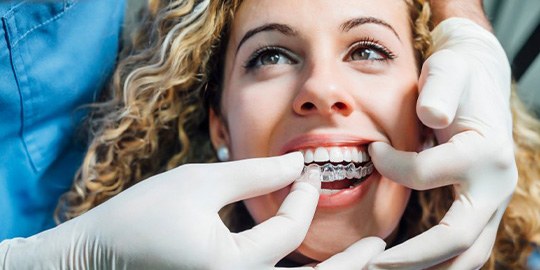
We’ll let you know how often to visit our office for a quick check-in. It could be every four weeks or every eight weeks, depending on what’s best for your treatment. The idea is to evaluate your progress and make sure you’re well on your way towards a straighter smile. But feel free to voice any questions or concerns during these appointments! After we wrap-up, we’ll give you the next series of aligners to tie you and your teeth over until next time.
Invisalign Teen® Clear Aligners
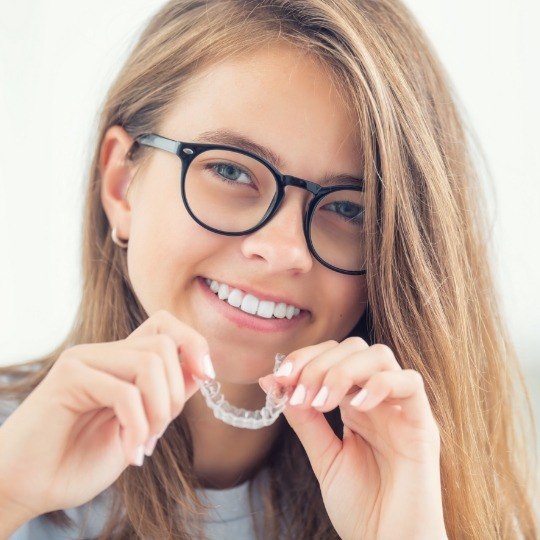
Did you know that there’s an Invisalign treatment designed for teens? Each aligner comes with a special dot near the back that changes color from clear to blue to white depending on how often the aligner is worn. This way, you have a concrete way to make sure that your child is complying with their treatment. Also, with Invisalign TEEN, you’ll be given a greater number of replacement aligners in case something goes wrong during the treatment.
Who Can Invisalign Help?
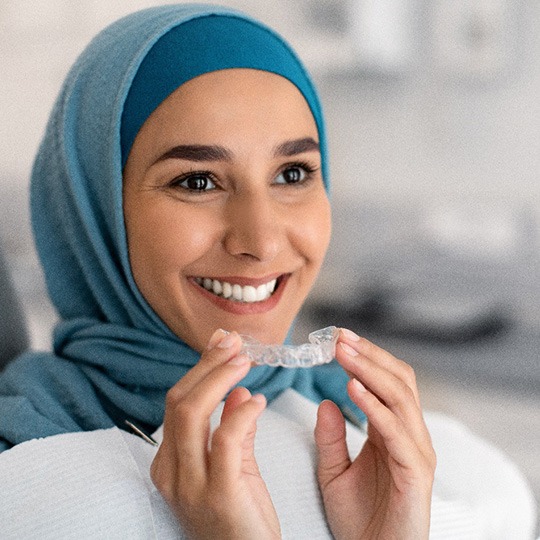
Invisalign is a popular alternative to traditional orthodontics, but that doesn’t mean it’s the best solution for everyone. Before we can proceed with this treatment, you must schedule a consultation appointment with one of our orthodontists to ensure you’re a good candidate. People who have more severe overcrowding, misalignments, and malocclusions may require traditional braces that allow for greater torque and manipulation of movement.
Continue reading below to learn more about the different types of issues that Invisalign can effectively address, and feel free to contact us for more information.
Crowded Teeth
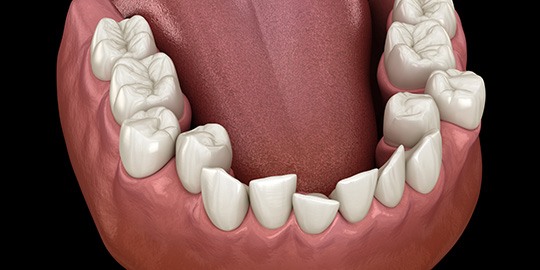
You might think of your teeth as stationary objects in your mouth, but they’re held in place by ligaments, tissues, and muscles that have a natural capacity for movement. That means that even if you’ve always had an even grin, there’s a chance it could shift out of alignment over time.
If your teeth become pressed too closely together, it’s harder to reach all their surfaces to brush and floss them thoroughly. If left unaddressed, this can increase your risk of cavities and gum disease. Invisalign is a discreet way to gently shift your teeth to boost your appearance and improve your oral health.
Gaps Between Teeth
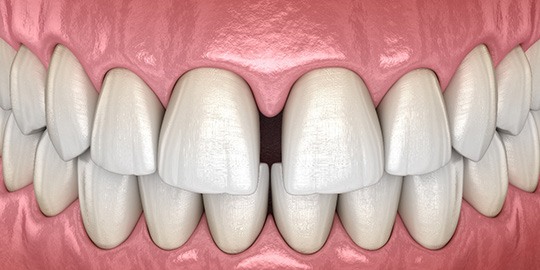
Wide spaces between teeth can be just as problematic as overcrowded ones. Not only can food become easily trapped and attract unwanted bacteria, but you could also injure gum tissue that’s left exposed between them. On top of that, you could develop anxiety if you’re overly worried about how others will perceive your dental condition. Invisalign can effectively close mild to moderate gaps to protect your grin and increase your confidence.
Overbite
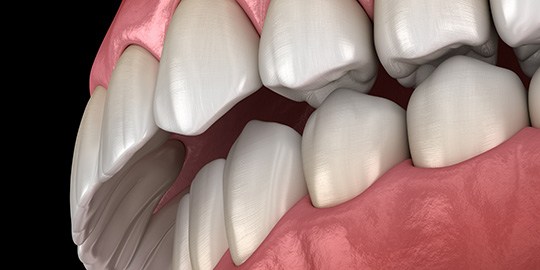
If your upper arch extends too far past your lower one when you close your mouth, you may have an overbite. This type of bite misalignment can cause speech impediments, a stiff jaw, and uneven enamel wear. Your overly exposed top teeth are also more prone to injury because they’re not as well protected. Fortunately, Invisalign can be used to shift the top row back to its proper place.
Underbite
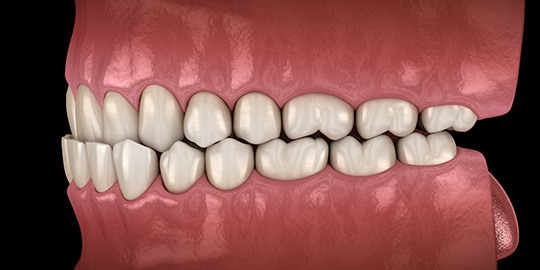
Those with this condition have lower teeth that touch or go past their upper ones when their jaw is relaxed. This is frequently due to physical oral trauma (like a jaw injury) or chronic thumb-sucking as a child. It is more easily addressed with younger patients whose mouths are more flexible, but it’s still important to address it even as an adult. Our orthodontists can use rubber bands and Invisalign attachments to help pull it into its rightful position.
Crossbite
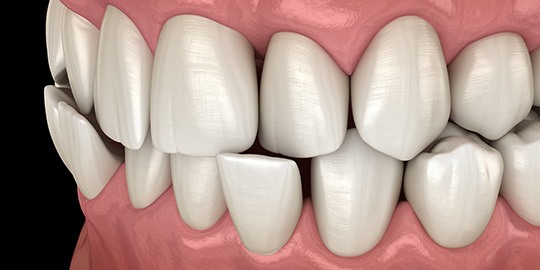
When one or more of your upper teeth fit inside of your lower ones when you bite down, or vice versa, then you may suffer from a crossbite. This can be caused by genetics, premature loss of baby teeth that affect jawbone development, or poor dental habits. Although Invisalign can be used to correct the problem, it may require the help of elastics or other accessories.
Open Bite
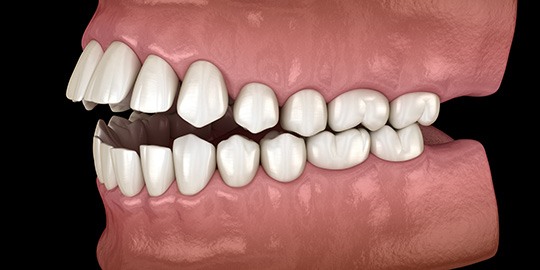
If your top and bottom front teeth don’t touch at all when your mouth is closed, then you probably have an open bite. Those who chronically sucked their thumbs or pacifiers when they were young are more likely to develop this issue. It unfortunately causes challenges enunciating certain sounds and words as well as excessive wear and tear of your back teeth, leaving them more vulnerable to cracks and breaks. Invisalign can bring them together to correct your bite pattern.
How Much Does Invisalign Cost?
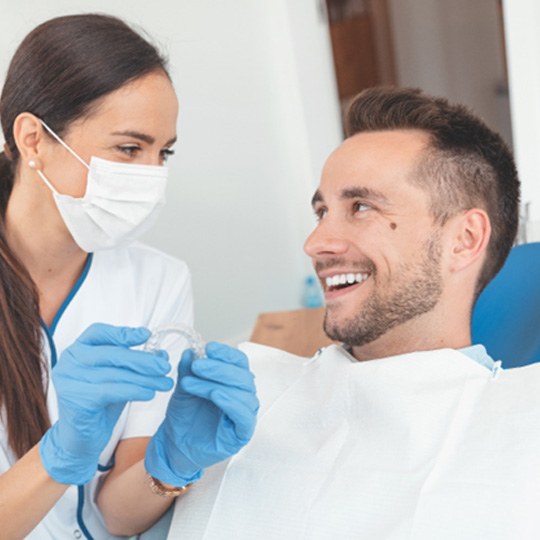
The cost of Invisalign in Atlanta is different for everyone. No two patients will arrive with the same problem, and because treatment is customized to each individual, the price tag varies. This is why a scheduled consultation with our team at Buckhead Orthodontics is essential. When meeting with our experts, we will not only discuss what you can expect when undergoing Invisalign treatment, but we’ll also provide a clear estimate so that you can better prepare when looking at your budget.
Factors that Affect the Cost of Invisalign
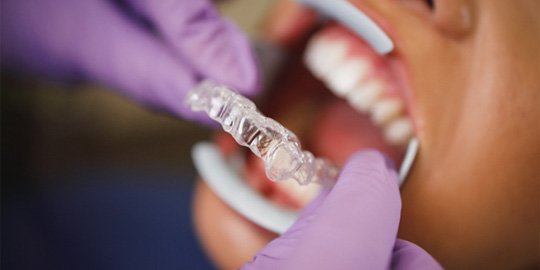
There is a multitude of factors that our team will consider as we look at your smile and determine how much your Invisalign in Atlanta will cost. The good news is that there are options when it comes to payment, so you can still afford to straighten your smile without emptying your wallet.
Some of the factors that we will look at include:
- The severity of your dental problem (i.e., gapped teeth, bite misalignment, overcrowding).
- How many clear aligners you will need to achieve results.
- The expected timeframe to complete the treatment.
Invisalign vs. Smile Direct Club™: Which Costs More?
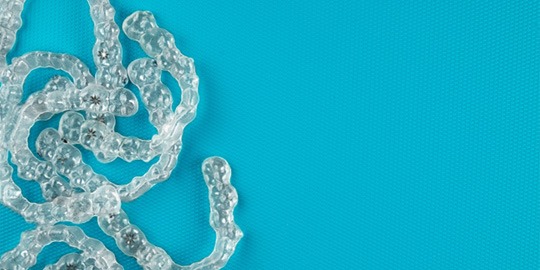
It’s not uncommon for many patients to be enticed by the affordability of other clear aligner systems like Smile Direct Club™. These solutions offer an appealing price tag while also proclaiming an easier way to achieve a straighter smile. While it is true that this type of solution may be cheaper upfront, there are some caveats that you should be aware of. Some of these include:
- With a DIY option like Smile Direct Club™, you may not receive a consultation beforehand, which means that you are deciding to move forward with treatment. This is potentially harmful, especially if your condition is not conducive to successful aligner care.
- You are required to capture your own impressions using their DIY impression kit. If not incorrectly, it can lead to ill-fitting aligners that can do further damage to your smile.
- Should a problem arise during treatment, you will not have an orthodontist to see face-to-face for help.
- The only type of checking-in you will do is virtual with someone at Smile Direct Club™. This doesn’t allow for a thorough examination but instead, leaves you to discuss your progress.
Choosing to see a skilled Invisalign dentist in Atlanta may be more expensive, but it will ensure that you get the results you desire and deserve. Also, you’ll be less likely to experience a problem your progress will be closely monitored by our knowledgeable and skilled team.
Does Dental Insurance Cover Invisalign?
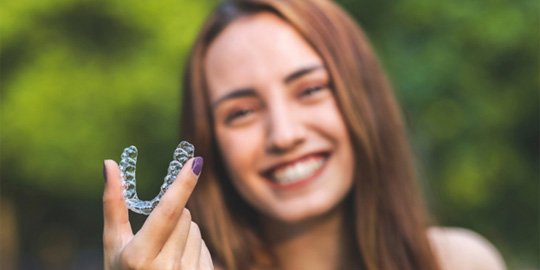
If you have dental insurance, there is a good chance that you will receive at least partial coverage (up to 50%) for Invisalign treatment. Not all policies include orthodontics, so you’ll need to review your plan before starting with Buckhead Orthodontics. It may be necessary that you purchase an additional policy that covers orthodontics for you and members of your family. No matter what, we will work to maximize your benefits so that you save more when undergoing treatment.
Options for Making Invisalign Affordable
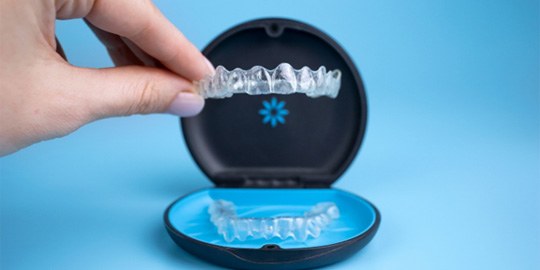
There are also alternative ways to pay if you do not have dental insurance. At Buckhead Orthodontics, we are pleased to offer our patients the following solutions:
- CareCredit – This third-party company offers low-to-no-interest payment plans with no surprise fees. You can easily pay for your orthodontic treatment without dipping into your savings account by spreading out your payments over several months.
- In-House Membership Plan – By enrolling in one of our interest-free payment plans, you can keep your treatment affordable.
Invisalign FAQs
Can Invisalign fix an overbite?
Having a slight overbite is completely normal; however, if you find that your jaw is severely misaligned, causing your upper row of teeth to protrude out over your bottom teeth significantly, you’ll need to seek treatment. Invisalign is known to correct mild to moderate overbites as well as other similar bite alignment issues. The only caveat is that more severe overbites will likely need a different form of orthodontic treatment (i.e., traditional braces) before switching to Invisalign.
The only way to know for sure if Invisalign can correct your overbite is to schedule a consultation with a member of our orthodontic team.
How do I clean my Invisalign?
To make sure that your Invisalign aligners stay clean, you’ll need to follow a few simple steps. First, you have the option of using Invisalign Cleaning Crystals. They help to loosen food debris and plaque. There is also a product known as Steraligner, which is a cleaning solution for Invisalign. There is, of course, always the option to use just a soft-bristled toothbrush. Make sure that you rinse them each time you take them out, never use hot water, as this can warp the plastic. Also, you’ll need to clean your teeth to avoid transferring bacteria and food particles.
Who invented Invisalign?
Zia Chishti and Kelsey Wirth of San Jose, CA, were the first to invent Invisalign in 1997. While Chishti is not an orthodontist or dentist, he possesses an MBA from Stanford. While in his program, he underwent traditional orthodontic treatment. Envisioning an alternative treatment that uses clear aligners as opposed to metal brackets and wires, he developed the concept in his dorm room before graduating and founding Align Technologies, LTD with other students.
Although he is no longer with the company, he helped to start something that has allowed more than 10 million people to enjoy the benefits of straight teeth without having to wear metal braces.
Is Invisalign cheaper than braces?
No two smiles are the same, so the cost of orthodontic treatment will also never be the same. No matter if it is traditional braces or Invisalign that you choose, there are various factors that your orthodontist will need to consider before formulating a cost estimate. Typically, Invisalign costs the same as traditional braces. On the higher end of both orthodontic solutions, you may spend around $5,000; however, your oral health, commitment to the plan, and your smile’s misalignment will all be factored into the total price.
In many cases, Invisalign may be more expensive because some insurance companies do not provide coverage, but many individuals say it is worth the investment because of the many benefits the clear aligners provide.
